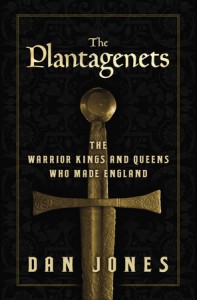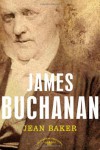Seriously, Read a Book!
Thoughts on books, often interpreted through the high-brow prism of cartoon (read: Archer) references. Wait! I had something for this...
Currently reading
The Plantagenets: The Warrior Kings and Queens Who Made England

Full disclosure—I undoubtedly read this book too soon after finishing The Tudors. While the overlapping content is minimal, and the authors differ somewhat stylistically, both books are broad sweeping histories featuring lots of kings and queens (many of whom shared the same names). Given that this was my first time encountering much of this material since high school, characters and events inevitably began to blur together. So, my take on Dan Jones and The Plantagenets: The Warrior Kings and Queens Who Made England is likely suffering a bit from sequential bias. Onward ho!
What a hot mess life could be in the Plantagenet empire! The best one can hope for is that we learn from the mistakes of the past. So, should anyone find themselves in any of the following situations, here are some bits of wisdom, courtesy of these “warrior kings and queen” of yore.
1. Never put all of your heirs in one boat.
Poor King Henry I—though his reign was long and prosperous, and his government among the most successful since Rome, high hopes for his legacy were dashed with the sinking of the White Ship. Not only was his legitimate son and next in line for the throne, William the Aethling, on board, but a couple of Henry's illegitimate children as well (Richard of Lincoln, and Matilda FitzRoy). The alternate lesson (this one from William) might be “if you're in a skiff after a shipwreck and see your half-sister in the water, just let her drown.”
2. Stop naming everyone Matilda!
I guess the time for my proposed naming injunction has kind of come and gone, but, seriously, there are just too many Matildas to deal with. We've dealt with one Matilda FitzRoy (the one who drowned), so that's taken care of. However, Henry I had another illegitimate daughter named Matilda who also was a Matilda FitzRoy because “FitzRoy” just means “son of the king” (and I guess they didn't bother dealing with the gender thing for these two daughters).
Maybe Henry just didn't know there were other names for girls because Matilda was also the name of: his mother/onetime Queen of England, Matilda of Flanders; his first wife, Matilda of Scotland; and the daughter they had, who became Empress Matilda. After William's death (FYI, his wife was also named Matilda), Henry appointed his only other legitimate child (the aforementioned Empress Matilda) as his heir. However, her cousin and his wife, Matilda of Boulogne, took over leaving us with King Stephen (not to be confused with Stephen King).
3. Not everyone's cracked up for the crusades.
During the twelfth century “taking the cross” (the term for becoming an official crusader) was all the rage. Richard I (aka Richard the Lionheart; below, L) came from good crusading stock—his mother, after all, was the super badass Eleanor of Aquitaine. For Richard, crusading was “both a spiritual business and a family matter.”
Richard had his own style about it. At one point, he sent a message to Saladin (the leader of the opposition Muslim crusaders; above, R) “requesting secret negotiations – and asking for peaches and ice to cool his raging fever.” Saladin declined the meeting, but still sent the fruit (classy move). Sickness didn't keep Richard on the sidelines:
“he was carried onto the battlefield on a litter, covered in a gloriously regal silken quilt and carrying a crossbow, which he fired at Muslim defenders from behind a screen.”
Philip II was a different story—Jones refers to his crusading career as a “catalogue of humiliation.” Finally (shoutout to Eric Cartman) he basically said, screw you guys, I'm going home.
“Philip II, driven by a cocktail of emotions that included jealousy, homesickness and exasperation, announced that he considered his crusading oath to have been served by the conquest of Acre. He was going home.”
4. Do not cross King John.
It was the reign of King John (the youngest son of Henry II and Eleanor; below, L) that is thought to have given birth to the legend of Robin Hood. I guess people just needed something to believe in because John was “a cruel master” to say the least! In addition to the typical methods of extracting money from the people (e.g. persecuting the Jews is always popular), he killed his nephew; pissed off his richest citizens; took the wives, mistresses, concubines, and children of clergymen hostage; and, upon learning of the papal Interdict against him, vowed to “pluck out priests’ eyes and clip their false tongues.”
 5. Everyone loves Arthur and Guinevere.
5. Everyone loves Arthur and Guinevere.
From the commoners to King Edward I himself, thirteenth-century Europe was crazy for King Arthur. There was even Arthur swag!
“By the time Edward was born, there was a booming trade in Arthuriana, and a healthy industry had grown up around his imagined memory.”
So, a great way to make a quick buck: pretend to find Arthur's skeleton and sell tickets for people to come check out the bones! Best business plan ever!
6. Don't bro down on your wedding night.
Our next Edward, Edward of Caernarfon, had a BFF by the name of Piers Gaveston. It's not clear whether Gaveston was a “brother figure,” as Edward claimed, or if there was something more to their relationship, but everyone thought the Edward-Gaveston bromance was just too much.
Edward became known for acts of impolitic favoritism, but the Gaveston-centric wedding takes the cake. Not only did Gaveston basically walk down the aisle with Edward and his bride, Isabella, he also (in his bizarre role as wedding planner) decorated the banquet hall with tapestries of his and Edward's arms and not Isabella's. The in-laws, of course, were not impressed.
Fin
Of course, there are more takeaway tales, but I suppose you'll just have to learn them for yourselves. The book progresses quickly, and Jones does a great job of injecting personalities while moving through the larger history.
 2
2
 2
2















